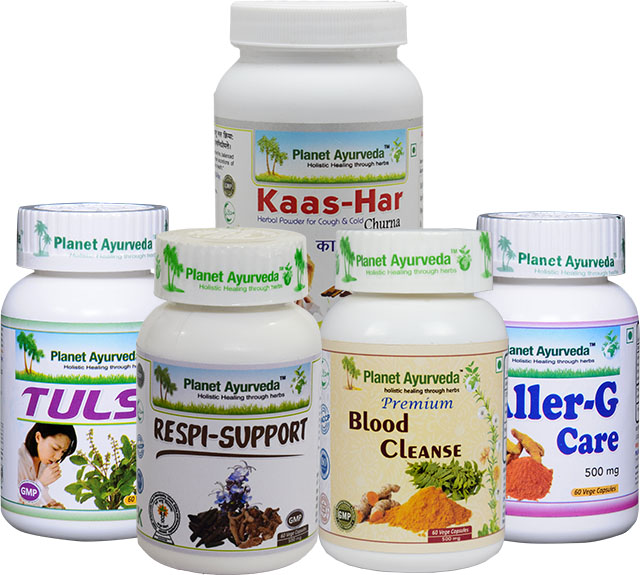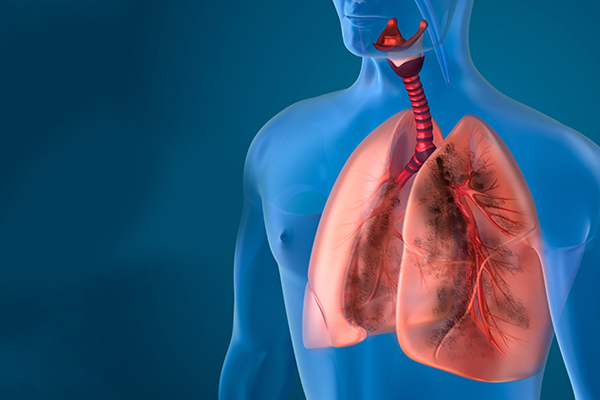Alternative Treatment For Pulmonary Eosinophilia
ABSTRACT
Pulmonary eosinophilia is a temporary and rare disorder of respiratory system that is presented by eosinophils accumulation in the lungs. Eosinophils are the part of immune system and are a type of white blood cells. When there is any active infection, inflammation or allergy in the body than these eosinophils are produced in response to it. Generally the Pulmonary eosinophilia is caused due to the infection, or allergic reaction to drugs. The severity of the disease may vary from mild where patient do not develop any symptom to severe condition. Complications occur in rare cases. This article is all about Pulmonary eosinophilia also termed as Eosinophilic lung disease and its Ayurvedic management and treatment.

INTRODUCTION TO PULMONARY EOSINOPHILIA
Eosinophilic lung disease or Pulmonary eosinophilia is a heterogenous group of disorders in which the number of eosinophils increase abnormally due to certain infection, allergic reaction to a medicine, etc. arising the reaction from body within the parenchyma and pulmonary airways. This disorder is a group of different pulmonary disorders related to tissue or peripheral eosinophilia. Percentage of eosinophils in bronchoalveolar lavage fluid and peripheral blood becomes the basis of differentiation between different types.
AYURVEDIC ASPECT OF PULMONARY EOSINOPHILIA
In Ayurvedic literature no direct correlation has been found for eosinophilia. However the concept of Viruddha ahara, Ama and Asthma goes well for this disorder where usually the cause is an allergic reaction. Impaired metabolism and low digestive fire (Agni) causes formation of Ama. This Ama affects the Rakta and Rasa dhatu causing the signs and symptoms. Viruddh Ahara which means incompatible food like fruit juice with milk, fish with milk, ice cream after night meals, clarified butter with honey causes allergy resulting in Pulmonary eosinophilia.
SIGNS AND SYMPTOMS OF THE PULMONARY EOSINOPHILIA
The signs and symptoms of Pulmonary eosinophilia are:
- Night sweats
- Fever
- Unintentional weight loss
- Fatigue
- Pruritus
- Eczema
- Rash or angioedema
- Shortness of breath
- Chest pain
- Dry cough
- General feeling of illness
- Rapid breathing
- Wheezing
CAUSES OF PULMONARY EOSINOPHILIA
There can be different causes of Pulmonary eosinophilia and some the major causes are:
- Allergic bronchopulmonary aspergillosis
- Exposure to parasitic infections
- Toxic substances or drugs
- Systemic disorders like hypereosinophilic syndrome and Chrug-Strauss syndrome
DIAGNOSIS OF PULMONARY EOSINOPHILIA
Identification of characteristic symptoms, thorough clinical evaluation, and detailed patient history is the main basis of diagnosis of Pulmonary eosinophilia. Your doctor will also perform a physical examination which will reveal rattling sounds in the lungs and wheezing. To confirm the diagnosis it is also necessary to rule out other causes of similar illness. Further blood tests will show elevated levels of eosinophils and IgE (Serum immunoglobulin) along with pulmonary signs and symptoms.
TREATMENT OF PULMONARY EOSINOPHILIA
Conventional treatment will include medicines as per the cause of the disease like if it is caused due to a parasitic infection certain antibiotics are given, drug induced Pulmonary eosinophilia is treated by stopping the suspected drug, further bronchodilators are used to treat respiratory complaints like cough and wheezing. However in certain cases corticosteroids are also given.
AYURVEDIC TREATMENT FOR PULMONARY EOSINOPHILIA
Ayurveda focuses on treating the root cause of the disease so that disease is eliminated. The cause here is imbalanced dosha and Ama formation due to improper diet (Viruddh ahar) and lifestyle. Hence herbal remedies and other Ayurvedic medicines prepared using natural compounds are used to treat the Pulmonary eosinophilia.
HERBAL REMEDIES OF PLANET AYURVEDA FOR PULMONARY EOSINOPHILIA
Planet Ayurveda is a very well known herbal pharmaceutical brand that deals in the production of herbal medicines and products and further their use for treatment of various diseases by the experienced Ayurvedic doctors. All the products and remedies are purely vegetarian and herbal and standardized as per the proper procedures and quality is maintained with the help of different quality check procedures. For Pulmonary eosinophilia Planet Ayurveda offers a combination of herbal remedies.
Products List
- Aller G Care
- Tulsi Capsule
- Kaas-Har Churna
- Premium Blood Cleanse
- Respi Support
Products Description
1. Aller-G Care
Haridra (Curcuma longa), Neem (Azadirachta indica), Shirish (Albezzia lubbock), and Ashwagandha (Withania somnifera) are the herbs used in the composition of Aller-G care capsules. Aller G care capsules help in treating inflammatory conditions causing the symptoms like runny, stuffy nose, cough, wheezing and rapid breathing.
Dosage- Take 1 capsule twice daily after meals with plain water.
2. Tulsi Capsule
Tulsi (Ocimum sanctum) is the single herb used in the standardized extract form to compose these amazing herbal capsules. This herb is very well known for its medicinal effect on the respiratory system, and these properties are present in Tulsi capsules from Planet Ayurveda as well. Tulsi capsules help in relieving the congestion in the chest, helps in treating cough, and wheezing.
Dosage– Take 1 capsule twice daily after meals with plain water.
3. Kaas-Har Churna
Kaas har churna is the herbal formula that helps in treating the dry cough in Pulmonary eosinophilia and also cleanses the airways. It is prepared from Mishri (Crystallized sugar), Pippali (Piper longum), Vanshlochan (Bambusa arundinacea), Dalchini (Cinnamomum zeylanica) and Ela (Elettaria cardamomum).
Dosage– Take one teaspoon twice daily after meals with plain water.
4. Premium Blood Cleanse
Two very potent herbs Haridra (Curcuma longa) and Neem (Azadirachta indica) are used to prepare these therapeutic capsules. Blood cleanse capsules help in clearing the blood naturally and prevent from any kind of infections and diseases originating from infection of blood.
Dosage- Take 1 capsule twice daily after meals with plain water.
5. Respi Support
As the name suggests these herbal capsules help in supporting the respiratory system and prevent the concerning diseases. It helps in treating wheezing, dry cough and rattling in the chest. Respi support capsules are prepared using Pippali (Piper longum), Karchoor (Curcuma zedoaria), Chironji (Buchanania latifolia), Bharangi (Clerodendrum serratum) and Shathi (Hedychium spicatum).
Dosage- Take 1 capsule twice daily after meals with plain water.
CONCLUSION
Pulmonary eosinophilia is a lung disease which can cause concerning symptoms. Hence, these herbal remedies can help in treating the Pulmonary eosinophilia naturally. There are no side effects of these herbal remedies even if taken for long term. In case of any query kindly visit www.PlanetAyurveda.com. For more queries, you can send your queries to our email id herbalremedies123@yahoo.com.





